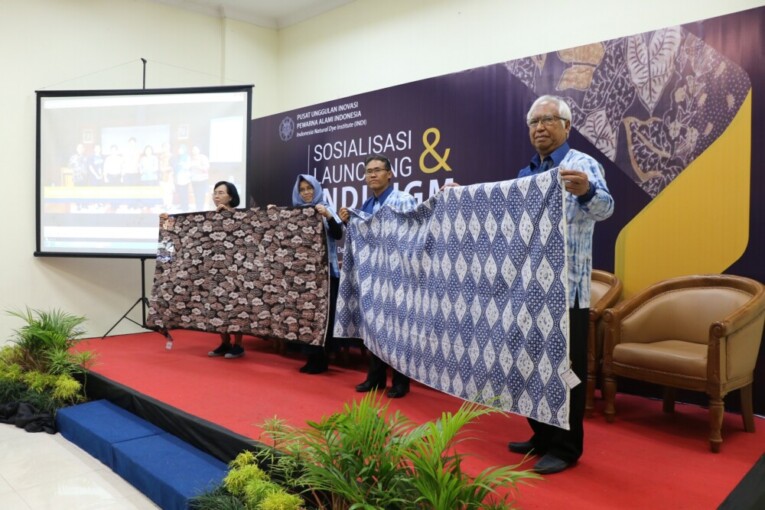
Rector of Universitas Gadjah Mada (UGM), Prof. Ir. Panut Mulyono, M.Eng., D.Eng., IPU, ASEAN Eng, launched Indonesia Natural Dye Institute (INDI) as a Centre of Innovative Excellence of Indonesian Natural Dye.
INDI will serve as a reference for education, research, and development of natural dye in Indonesia. INDI will facilitate management and development of natural dye more systematically and efficiently. It will runs training and research, produce and promote natural dyes and organise researchers, activists, producers, and users of natural dye.
The Rector in his remarks expected INDI to contribute to the development of technology in this matter which can eventually make contributions to the country’s economic growth.
“UGM is a comprehensive university with many disciplines that can utilise them for the nation,” he said in GSP UGM on Tuesday (10/12) during socialisation and launching of the INDI.
He explained the presence of INDI, was not just to produce research and technology development but contribute directly to economic development. INDI can play its role because Indonesia has the third largest biodiversity in the world.
“For example, dyes are required in batik that has been recognised by UNESCO as a world heritage. The world will know how we protect the environment by choosing natural dyes,” he said.
Vice-Rector of Research and Community Service, drg. Ika Dewi Ana, M.Kes., Ph.D., said research into Indonesian natural dye at UGM was potential as it could explore more the culture and philosophy of Indonesia.
“Also, we can develop new technologies for the future, for example how to make the dye stable and colour intensity,” she said.
INDI coordinator, Dr. Ir. Edia Rahayuningsih, M.S, added natural dyes can be applied to textiles, foods, and other products. To use such dyes is prospective due to the ban in synthetic colourings while Indonesia still uses them at a great amount. “Craft makers said 80-90 percent still use naphthol which is actually already banned. On the other hand, Indonesia is rich in natural resources that are underused,” she said.

